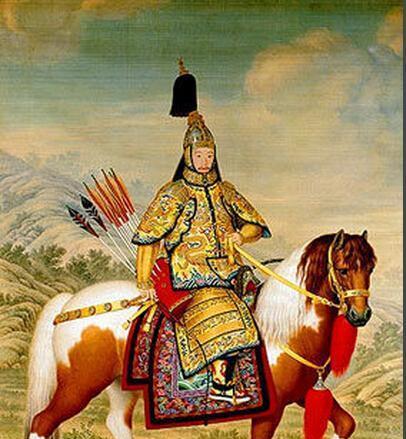
The most important festival for the common people is the Spring Festival, and the emperor of the Qing Dynasty is no exception. Taking the Qianlong Emperor as an example, generally on the 26th day of the waxing month, the emperor "sealed the pen" and "sealed the seal", stopped working, and did not "open the pen" and "open the seal" until the ceremony at the beginning of the first month.
According to the "Draft History of the Qing Dynasty? The Lizhi records that on the morning of the first day of the first lunar month, just after dawn, hundreds of officials gathered in the Taihedian Square to pay homage to the Qianlong Emperor. On that day, the square was lined with Luan driving honor guards, and under the eaves of the main hall were royal bands and musical instruments such as golden bells and jade chimes. At 7 o'clock, the Qin Tianjian officials announced that the hour had arrived, the bells and drums were sounded at the noon gate, the orchestra played music, the emperor ascended to the throne of the Taihe Temple, the Luan Yiwei officials threw a quiet whip, and the praise officer shouted "schedule".
The hundred officials knelt in line according to the grade position marked by the bronze "grade mountain" placed on the square. At this time, two university scholars knelt down to hold the congratulatory watch, which was read by the propaganda officer. After reading, the hundred officials performed three kneeling and nine prostrations. At the end of the ceremony, the emperor gave tea to the throne, and the hundred officials prostrated their heads in thanksgiving. After the tea is finished, the whip is played again, the band is played again, the emperor goes down to the temple, the hundred officials retire from the dynasty, and the ceremony of celebrating the New Year is completed.
At this time, the emperor gave the purse containing "Ruyi" that had been prepared long ago to the Eight Banners disciples, palace women, and eunuchs around him. The "ruyi" in the purse usually has several kinds of gold ruyi, silver ruyi, jade ruyi and silver money. Before the Qianlong Emperor ascended to the Taihe Hall to accept the Hundred Officials' New Year's Greeting, he usually drank a cup of Tusu wine in his Sleeping Official Yangxin Hall.
The Qing Dynasty's "Continuation of the History of the State Dynasty Palace" records that the Qianlong Emperor had to go to the Beihai Xiangfu Temple every morning on the first morning of the first lunar month, climb the Big Buddha Tower to enter the Incense, and then return to the Chonghua Palace where he lived before he became emperor, and use a black lacquer brush engraved with "Blessing Cangsheng" and known as "Evergreen Pipe" to write the word Fu with cinnabar. The first fu character must be solemnly sealed as usual and never opened to show that it is blessed to remain.
The next written blessing was given to the prince and his ministers. The Confucian classic Shang Shu explains the meaning of the word "Fu": one is longevity, the second is wealth, the third is kangning, the fourth is virtue, and the fifth is old age and good death. According to this statement, the premise of happiness is longevity. The Qianlong Emperor lived to be 89 years old, and his children and grandchildren were in the same hall for five generations, ranking first among the emperors of all dynasties, so in his later years he thought that the five blessings were complete, and he called himself "the five blessings and five generations of ancient rare heavenly sons"
In addition, during the New Year, the Qianlong Emperor would also set off firecrackers and paste couplets, but the couplets used in the royal New Year used to hang instead of the paste commonly used by the people. This is not only clean to use, but it can be used many times if it is properly preserved.